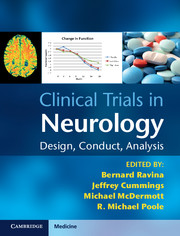4 - Fundamentals of Biostatistics
from Section 2
Published online by Cambridge University Press: 05 May 2012
Summary
- Type
- Chapter
- Information
- Clinical Trials in NeurologyDesign, Conduct, Analysis, pp. 28 - 41Publisher: Cambridge University PressPrint publication year: 2012

